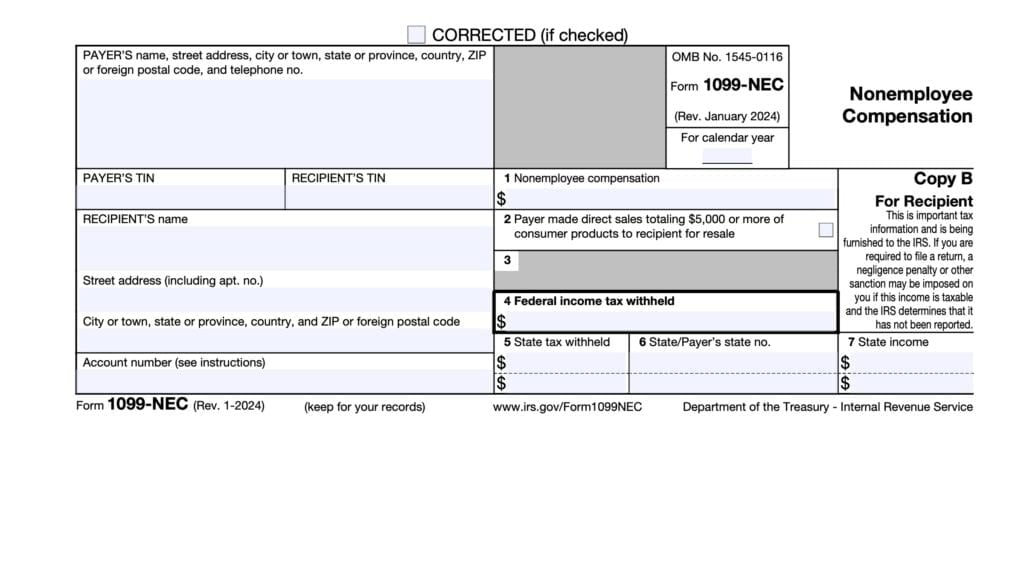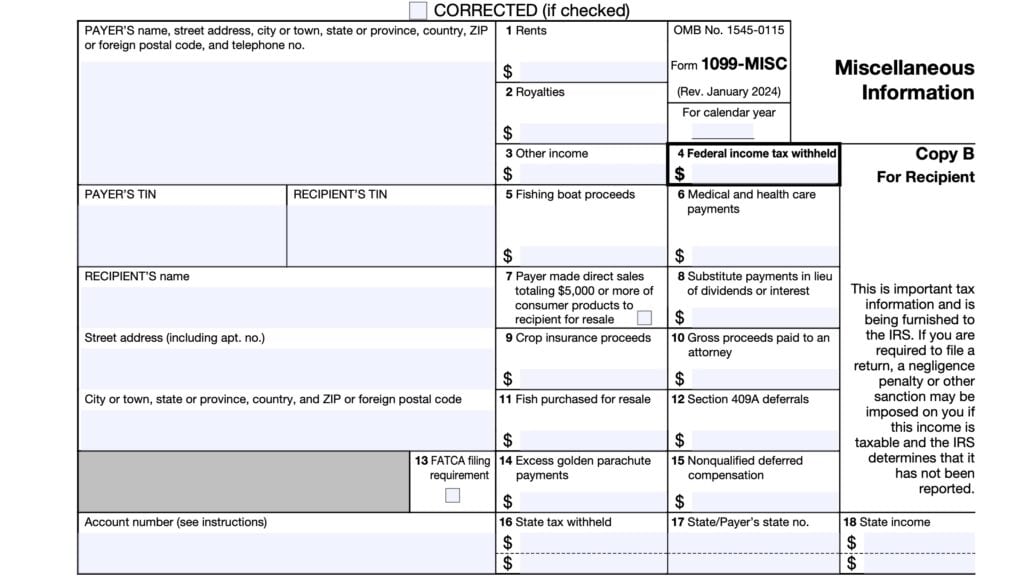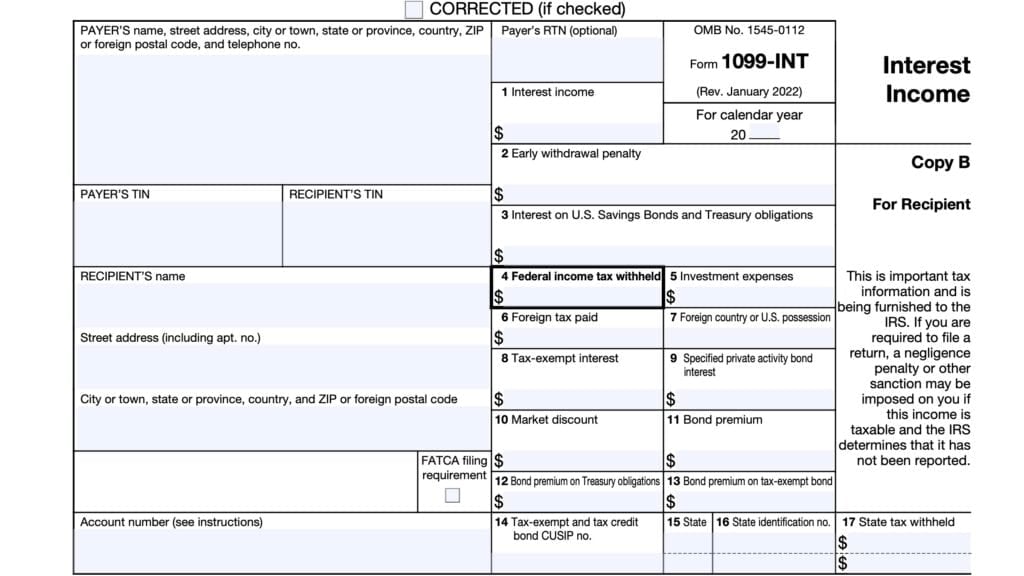IRS Form 1099-C Instructions
If you had debt discharged without having to fully repay the balance, you may receive a copy of IRS Form 1099-C, Cancellation of Debt, at the end of the tax year.
In this article, we’ll walk through IRS Form 1099-C, including:
- How to read and understand the tax form
- When and how to report discharged debt on your income tax return
- Frequently asked questions
Let’s begin with a breakdown of this tax form.
Table of contents
IRS Form 1099-C instructions
In most of our articles, we walk you through how to complete the tax form. However, since Form-1099 is issued to taxpayers for informational purposes, most readers will probably want to understand the information reported on their 1099-C form, instead of how to complete it.
Before we start breaking down this tax form, it’s important to understand that there can be up to 3 copies of Forms 1099-C. Here is a break down of where all these forms end up:
- Copy A: Internal Revenue Service center
- Copy B: For debtor’s tax records
- Copy C: For creditor’s records
Let’s get into the form itself, starting with the information fields on the left side of the form.
Taxpayer identification fields
Creditor’s Name, Address, And Telephone Number
You should see the lender’s complete business name, address, zip code, and telephone number in this field.
Creditor’s TIN
This is the payer’s taxpayer identification number (TIN). In most situations, this will be the employer identification number (EIN).
The payer’s TIN should never be truncated.
Debtor’s TIN
As the debtor, you should see your taxpayer identification number in this field. The TIN can be any of the following:
- Social Security number (SSN)
- Individual taxpayer identification number (ITIN)
- Adoption taxpayer identification number (ATIN)
- Employer identification number (EIN)
Please review this field to make sure that it is correct. However, you may see a truncated form of your TIN (such as the last four digits of your SSN), for privacy protection purposes. Copy A, which is sent to the Internal Revenue Service, is never truncated.
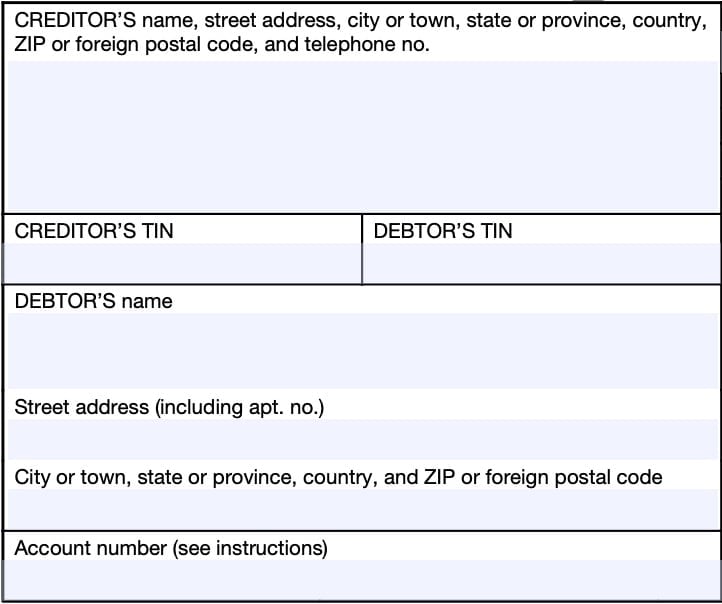
Debtor’s Name And Address
You should see your legal name and address reflected in these fields. If your address is incorrect, you should notify the financial institution and the IRS.
You can notify the IRS of your new address by filing IRS Form 8822, Change of Address. Business owners can notify the IRS of a change in their business address by filing IRS Form 8822-B, Change of Address or Responsible Party, Business.
Account Number
This field is present in many information returns, such as IRS Form 1099-NEC or IRS Form 1099-MISC.
Your payer have established a unique account number for you, which may appear in this field. If the field is blank, you may ignore it.
Let’s turn to the information fields on the right-hand side of your 1099-C form.
Boxes 1 through 7
On the right side of the form, we’ll go through each line. Specifically, we’ll go over the tax information you should see, and how you might report it on your federal tax return.
Box 1: Date of identifiable event
Shows the date the earliest identifiable event occurred or, at the creditor’s discretion, the date of an actual discharge that occurred before an identifiable event. The type of identifiable event will be marked by an identifiable event code in Box 6.
A list of types of identifiable events is covered in the Box 6 instructions, below.
Box 2: Amount of debt discharged
Shows the amount of debt either actually or deemed discharged.
According to IRS Publication 4681, Canceled Debts, Foreclosures, Repossessions, and Abandonments, individuals must include the amount of the cancelled debt as taxable income. How you report your cancellation of debt income depends on your tax situation.
Ways to report discharged debt on your income tax return
IRS Publication 4681 outlines the following manners to report your discharged debt on your Form 1040 or Form 1040-SR:
- Nonbusiness debt: Report nonbusiness debt on IRS Schedule 1, Additional Income and Adjustments to Income, Line 8c
- Nonfarm sole proprietorship: If you are a sole proprietor, report the amount of the canceled debt on Schedule C, Profit or Loss from Business, Line 6
- Nonfarm rental real property: If you are reporting forgiven mortgage debt or acquisition indebtedness on rental real estate that is not farm property, report it on Line 3 of Schedule E, Supplemental Income and Loss
- Farm property: If you are a farmer, reporting farm debt, report the canceled amounts on Schedule F, Profit and Loss From Farming, Line 8
- Farm rental activity: For debt related to farm rental activity, for which you report farm rental income based upon crops or livestock produced by a tenant, report your discharged debt on IRS Form 4835, Farm Rental Income and Expenses, Line 6
Note: If you believe that Box 2 contains incorrect information about the forgiven amount, you’ll need to contact your creditor and see if they’ll re-issue your Form 1099-C.
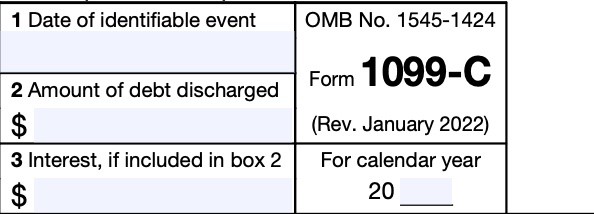
Box 3: Interest, if included in Box 2
If interest was included in the forgiven debt reported in Box 2, that amount will appear in Box 3.
Whether the interest portion of the canceled debt must be included in your income depends on whether the interest would be deductible if you paid it. This generally depends on whether you use the cash method or accrual method of accounting.
Do I include interest on my canceled debt in gross income?
If you are a cash basis taxpayer, then the interest on your accrued debt generally would be tax-deductible in the tax year that you paid it. Since this tax-deductible interest is included in the full amount of your forgiven debt, you do not need to include it in gross income on your income tax return.
Conversely, if you are an accrual basis taxpayer, you may have taken the interest in a previous tax year, when you first incurred the debt.
If there is a doubt about whether you should include interest on your canceled debt, you should review your tax return with a tax expert, such as a CPA or enrolled agent, before filing.
Box 4: Debt description
Shows a description of the debt.
If Box 7 is completed, Box 4 also shows a description of the property.
Box 5
Shows whether you were personally liable for repayment of the debt when the debt was created or, if modified, at the time of the last modification.
If you are personally liable for repaying the debt, this is known as recourse debt. Conversely, if you are not personally liable to repay the debt, then it is nonrecourse debt. Depending on your tax situation, this may impact whether or not you need to report the discharge of indebtedness in your income.
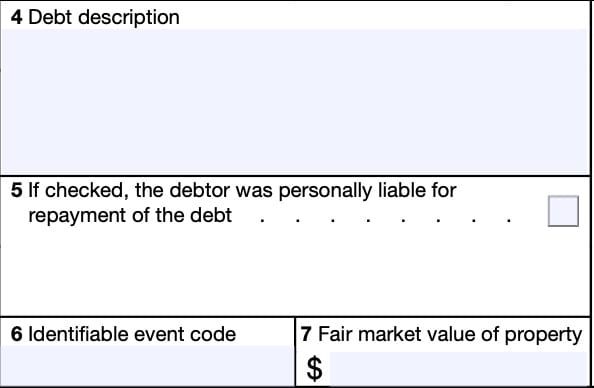
Box 6: Identifiable event code
Box 6 shows an identifiable event code, which states the reason your creditor filed this form.
Types of identifiable events
Below are the different types of identifiable event codes:
- Code A: Discharge due to bankruptcy
- Code B: Cancellation or extinguishment that makes the debt unenforceable in receivership, foreclosure, or a similar nonbankruptcy proceeding
- Code C: Statute of limitations expiration
- Must be upheld in a final court decision or judgment and the appeal period must have expired
- Code D: Creditor chooses foreclosure, which bars further debt collection
- Code E: Debt relief from probate or similar proceeding
- Code F: Agreement between creditor and debtor to cancel the debt at less than full consideration, such as a short sale
- Code G: Decision or creditor’s policy to discontinue collection activity and cancel the debt
- Code H: Other actual discharge before identifiable debt
Box 7: Fair market value of property
If, in the same calendar year, a foreclosure or abandonment of property occurred in connection with the cancellation of the debt, the fair market value (FMV) of the property will be shown in Box 7. If not, you should expect to receive a separate IRS Form 1099-A, Acquisition or Abandonment of Secured Property.
Generally, in a foreclosure, the FMV is the same as the gross foreclosure bid price. For an abandonment or voluntary conveyance in lieu of foreclosure, the FMV is generally the appraised value of the property.
You may have income or loss because of the acquisition or abandonment. IRS Publication 4681 contains information about foreclosures and abandonments.
If the property was your primary residence, you may need to figure an taxable gain or ordinary income using guidance from IRS Publication 523, Selling Your Home.
Filing IRS Form 1099-C
For tax entities who must file this tax form with the Internal Revenue Service, the IRS requires certain paper versions of information returns to be accompanied by IRS Form 1096, Annual Summary and Transmittal of U.S. Information Returns.
Check out our step-by step instructional guide for more information on how to submit your information return with IRS Form 1096.
Video walkthrough
Watch this instructional video to learn more about your Form 1099-C.
Frequently asked questions
If you’ve recently had $600 or more of qualified debt canceled, the lender is required to report the discharge of indebtedness on IRS Form 1099-C. One copy is sent to the IRS, one is sent to the debtor, and one is retained by the lender.
Generally, a lender reporting your debt cancelation to the IRS will not hurt your credit score. However, the creditor will probably report the underlying event, such as canceled credit card debt, short sale, or foreclosure, to the credit bureaus. That will lower your credit score.
You may receive IRS Form 1099-C for student loan discharges. However, under the current tax law, student loans discharged before January 1, 2026 are not considered as taxable income.
Where can I find IRS Form 1099-C?
You can find most tax forms on the IRS website. For your convenience, we’ve enclosed the latest version of IRS Form 1099-C here.
Related tax articles
This tax form is one of the fillable tax forms provided by the Internal Revenue Service, to help taxpayers reduce their tax preparation costs. To see more forms like this, visit our free fillable tax forms page, where you’ll also find articles like this.
Unlike the IRS, our articles contain step by step instructions for each tax form, as well as video walkthroughs. You can also check out all of our videos by subscribing to our YouTube channel!

